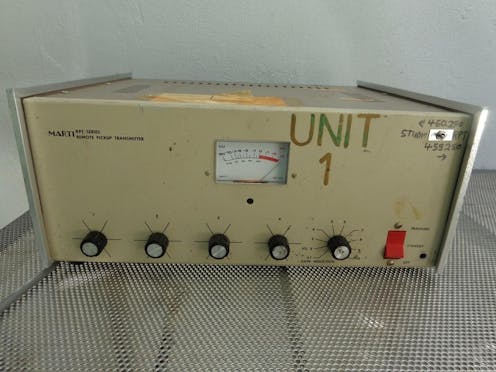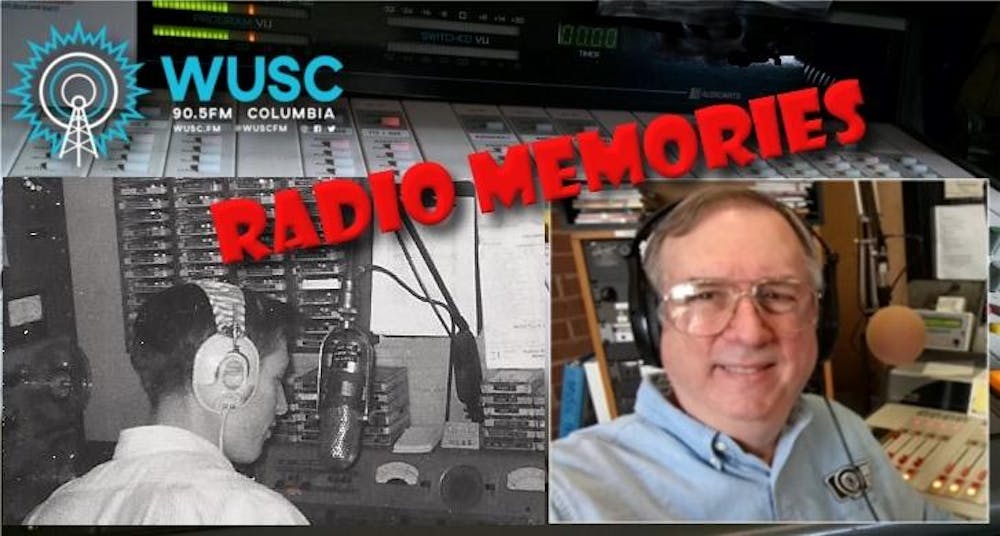Radio Animals
WIS Radio was in a suburban setting northwest of Columbia. It was also down in the basin of the Saluda River that was occasionally prone to flooding. The station building was built on 15’ pilings that put the floor above the 100 year flood level for the area. The bases of the three towers were also built 15’ off the ground on top of counterpoises, circles of copper wire on posts with copper wires forming a grid between the tower and the copper grounding system below that ran out 440’ to match the 440’ tall towers. They formed a stable electrical grounding system during floods. The tuning house for each tower was a wooden shed that housed the components that connected the tower to the transmission line.
So quite often there would be critters moving around under the building and the tuning houses. I often saw possum and raccoons moving around under there, especially at dawn and dusk. I was pretty cool with that, I left them alone and they didn’t mess with me or the equipment out in the tower field.
I was less cool with the snakes in the area. They were mostly water moccasins and they loved getting involved with the equipment at the tower bases. And they were abysmally stupid. More than once, I found snake carcasses on the ground underneath the arc gap, a pair of 3” steel balls held one inch apart, one attached to the grounding system and the other attached to the base of the tower which was not grounded. If a snake touched both balls at the same time, they would momentarily short out the tower and go up in a puff of smoke.
Each of these 440’ towers were held in place with three sets of guy wires. Each set of guy wires was attached to a low concrete structure that anchored the three guy wires in each set to the ground. The three guys were attached to the tower at 1/3, 2/3 and the top of each tower. Each guy wire was broken up with insulators at even intervals, keeping the tower itself isolated from the ground. The three sets of guys were spaced at 60 degree angles around the base of each tower. Once a month, I’d inspect these anchors to make sure they were not damaged by the mowers or cracked by weather changes. More often than not there would be a moccasin or two waiting for me there.

This is a typical modern AM Tuning house. The ones at WIS Radio were significantly larger and positioned atop a six-foot ladder that ran from the ground to the raised counterpoise of the ground system. This was done because this are flooded frequently.
One dusk, at the time WIS switched from non directional to directional, the DJ on duty opened the door to my office and told me that the tower readings that he was required to take at that time did not look right. Sure enough, they were really wacky. I checked the common point amperage on the phasor and it was correct. An inspection of the phasor components did not reveal any damage. So I went out to the towers to take my antenna readings and inspect the coils and capacitors in each tuning house, this time with a two way radio in my hand. When I opened the tuning house of Tower #1, I found a moccasin draped across the big metal coil, still smoking! I called the DJ on the radio and told him to turn the transmitter off and not to turn it on again until I told him to. When the transmitter was off, I used the shorting wand that was normally used to short out any charges in the big capacitors to lift the snake’s body off the coil. I then told the DJ to turn the transmitter back on and to check the readings again. He did and all was ok. Well, for everyone but that snake.
My other two radio animal stories involve Riverbanks Zoo & Garden which opened on April 25, 1974.

On the anniversary of the opening in 1978, WIS scheduled a live remote of the Morning Show using the new Marti remote transmitter. I arrived at the Zoo around 5 AM that morning with all the gear we needed for the show. I went to the security gate which is now the main gate entrance for the zoo and the lone security guard let me in to the concrete covered open space in front of the flamingo exhibit. As I set up the equipment and the portable tower for the Marti, I began to have a creepy feeling that I was being watched. I looked over to the guard shack and he was sitting with his back to me reading the morning paper which had just been delivered. I called over to the guard and asked if there was anyone else on the property and he said no. I said that I was feeling like someone was watching me. He laughed and pointed to the flamingos. Every bird was awake and every pair of eyes was firmly fixed on me. I moved around the space and every one of those nearly 100 heads turned to point directly at me. When I mentioned it to Satch Krantz, the Executive Director of the zoo he told me that I wasn’t the first to be spooked by the flamingos.
Later that summer WIS volunteered me in two other projects, the first was to replace the rainforest automation in the original birdhouse which was failing with mechanical one. While I was there I noticed the Jackass Penguin exhibit across the atrium which was sealed behind a pane of glass. The Curator of Birds told me that they were called Jackass Penguins because they sounded just like jackasses braying. We had access to the private spaces behind the exhibits so he, Satch and I walked around and sure enough, they did. Satch asked if it would be a big deal to place microphones in the exhibit connected to speakers in the atrium and I said that it should be easy. I was recruited to mount the necessary equipment inside the exhibit and on the wall of the atrium outside the glass. I learned two things during that project; Jackass Penguins are very territorial and they defend their territory by pecking at the intruder. I can still remember those pecks to me derriere.
These days, Riverbanks Zoo and Garden is South Carolina's largest gated attraction, averaging over one million visitors each year.
Photo Credits:

I was born in a great Radio Town; Jacksonville Florida. So it was only natural that I joined WUSC (AM at the time) in my first semester 1963. I went on to a career in commercial radio and television in Columbia, WCOS AM & FM, WIS-TV, WIS Radio, SCETV and PBS. I'm retired now, giving back since 2010 to the station that started my career, WUSC-FM. If you did the math you will know that I celebrated the 60th anniversary of my first radio show ever in November 2023.

